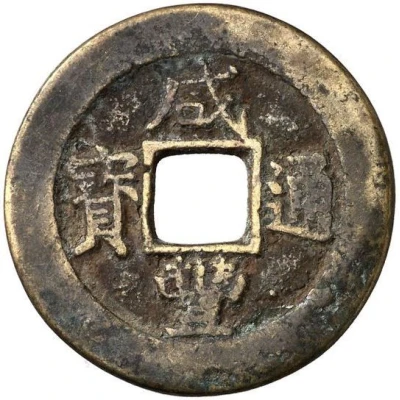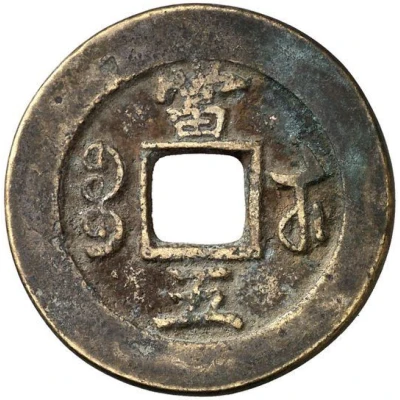5 Cash - Xianfeng Zhongbao; Boo-chiowan; Regular script; Wu Wen ND
| Brass | - | 26 mm |
| Issuer | Empire of China |
|---|---|
| Emperor | Qing dynasty › Xianfeng (咸豐帝) (1850-1861) |
| Type | Standard circulation coin |
| Years | 1853-1861 |
| Value | 5 Cash |
| Currency | Cash (621-1912) |
| Composition | Brass |
| Diameter | 26 mm |
| Shape | Round with a square hole |
| Technique | Cast |
| Orientation | Medal alignment ↑↑ |
| Demonetized | Yes |
| Updated | 2024-10-03 |
| Numista | N#225802 |
|---|---|
| Rarity index | 100% |
Reverse
Two Manchu words (read vertically) separated by the hole, all with one Chinese ideogram above and one below.
Scripts: Chinese (traditional, regular script), Mongolian / Manchu
Lettering:
伍
ᠪᠣᠣ ᠴᡳᠣᠸᠠᠨ
文
Translation:
Wu Wen / Boo-chiowan
5 Cash / Boo-chiowan
Edge
Plain
Comment
These designs were not actually adopted.Interesting fact
One interesting fact about the Standard circulation coin 5 Cash - Xianfeng (Zhongbao; Boo-chiowan; Regular script; Wu Wen) ND (1853-1861) from Empire of China made of Brass is that it was designed by a French engraver named Jean-Antoine-Marcelin Gandon, who was hired by the Chinese government to modernize their currency. This coin was part of a series of coins that were introduced during the Xianfeng era, which aimed to replace the traditional Chinese cash coins with more modern currency. The coin features the Chinese characters "Zhongbao" and "Boo-chiowan" on opposite sides, and the Wu Wen, or "five grains," symbol on the reverse side. The use of brass in the production of this coin was a significant departure from the traditional Chinese practice of using copper or other metals, and it marked a turning point in the history of Chinese currency.

